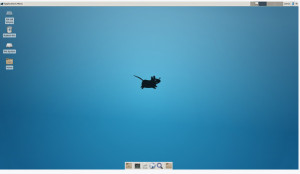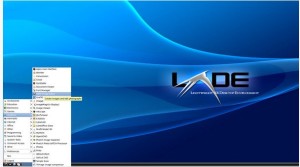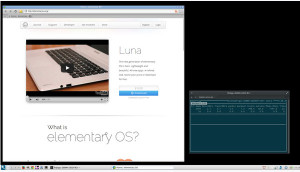If you are a beginner in Linux then you will find two defaulting desktop environments for sure, KDE and GNOME. Both these options offer attractive desktops and also nice applications like multimedia software, games, educational applications, web development tools and many more. If any suer or developer wants to run an attractive Linux desktop on an older hardware, netbooks or mobile internet devices, then KDE or GNOME is not a good option. But that’s not at all a problem. Linux users have plenty of options to choose from.
Here, we’ll offer you a list of desktop environments which run excellently on older hardware. All these desktops come under freely distributed licenses. You can try at least one option from the list below if your Linux box feels slothful when it’s into general use:
1. Xfce :
 Xfce is again an open source desktop environment which is fast and lightweight, and also quite attractive and easy-to-use. It’s entirely mouse driven and is based on the GTK+2 toolkit. Xfce runs a modern desktop environment and it contains several projects like window manager, session manager, desktop manager and also settings manager. It has a text editor called Mousepad, a modern file manager (called Thunar), an image viewer (called Ristretto), an archive manager (Xarchiver) and many more.
Xfce is again an open source desktop environment which is fast and lightweight, and also quite attractive and easy-to-use. It’s entirely mouse driven and is based on the GTK+2 toolkit. Xfce runs a modern desktop environment and it contains several projects like window manager, session manager, desktop manager and also settings manager. It has a text editor called Mousepad, a modern file manager (called Thunar), an image viewer (called Ristretto), an archive manager (Xarchiver) and many more.
It has its own compositing manager which takes advantage of X.org;s server extensions. Xfce panel is a part of the Xfce Desktop Environment and it also features program launchers, panel menus, kiosk mode, extended Window Manager, desktop menus, drag-and-drop protocol and icon themes too.
2. LXDE :
 Lightweight X11 Desktop Environment or LXDE is an open source project which aims to provide a lightweight, fast and user-friendly desktop environment. It’s usable, slim and it offers desktop independence. Users need not install the whole desktop and they can select that parts for their customised desktop. LXDE performs best on low end computers like netbooks and it’s highly energy efficient. LXDE is the default desktop environment of Knoppix, Lubuntu and Raspbian and many others.
Lightweight X11 Desktop Environment or LXDE is an open source project which aims to provide a lightweight, fast and user-friendly desktop environment. It’s usable, slim and it offers desktop independence. Users need not install the whole desktop and they can select that parts for their customised desktop. LXDE performs best on low end computers like netbooks and it’s highly energy efficient. LXDE is the default desktop environment of Knoppix, Lubuntu and Raspbian and many others.
LXDE includes a fast file manager, image viewer, feature-rich panel, session manager, simple interface and many more.
3. LXQt :
 This is an advanced, easy-to-use and fast desktop environment which is based on Qt technologies. It offers fast and stable desktop environment and it will soon be able to be used in production desktop machines too.
This is an advanced, easy-to-use and fast desktop environment which is based on Qt technologies. It offers fast and stable desktop environment and it will soon be able to be used in production desktop machines too.
It’s not as much efficient as LXDE or Xfce. But its rich features include modular architecture, efficient program launcher, experimental Raspberry Pi support, language translation options and many more.





